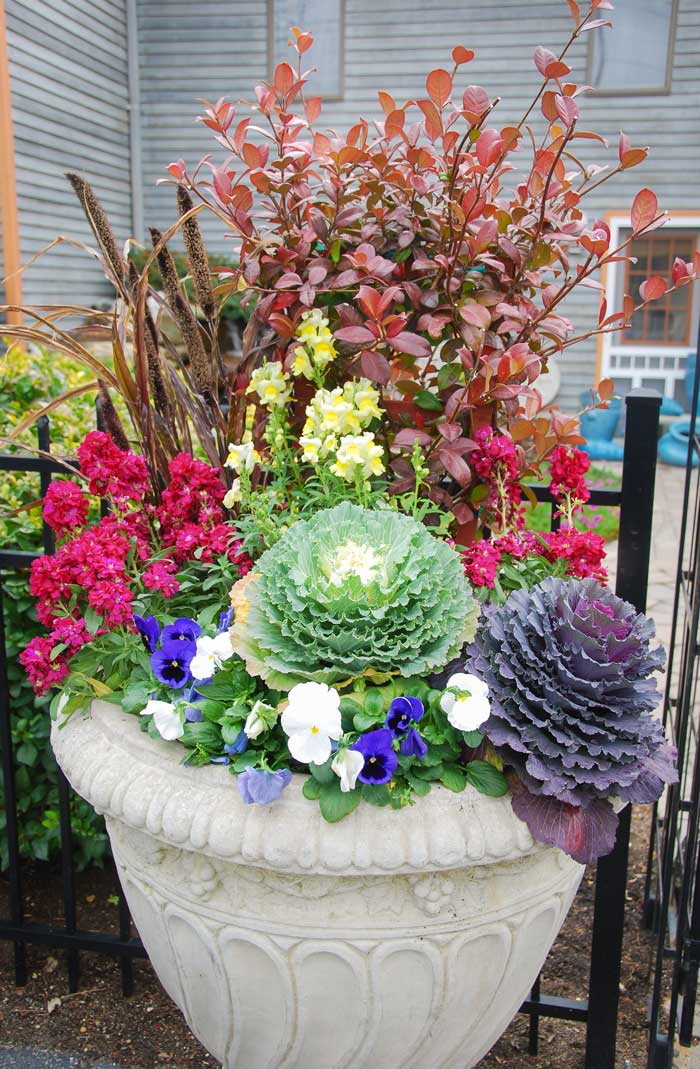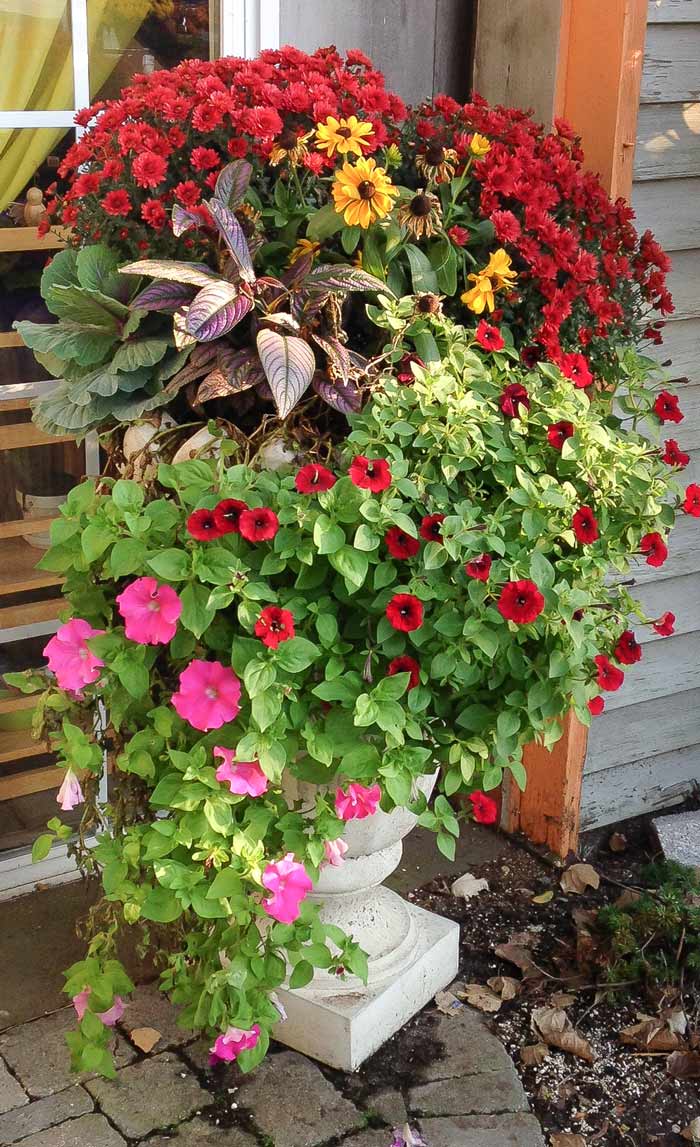Plant On!
The first thing to think about before starting to create an arrangement for the Fall season is the type of container you want to use. There is no limit to options. The container helps dictate the character of your creation. Planting in an antique, wooden tool box, for example, exudes charm and quaintness, while planting in tall, beautiful urns flanking each side of a driveway leans toward elegance and formality.
With the waning of hot summer days and the onset of cooler temperatures of Fall, changes take place in the plant world, bringing an array of new materials available to create a fall planter to decorate your home. The use of mums, asters, cabbage, and ornamental kale in planters remains timeless and pretty; however, interest can be added by incorporating annuals that shy away from hot weather but shine in cooler weather—things like pansies, snap dragons, stock, annual dianthus, and osteospermum.


Colors in fall planters don’t have to be restricted to flower color. Take a walk through a plant nursery and look for shrubs that are changing colors into bright yellow and shades of red and burgundy. A small shrub can make a great background or focal point in your planter. One go-to shrub for Fall is Itea (Virginia Sweetspire) that turns a wonderful red in the fall. Keep an eye out for shrubs with fall berries, such as viburnum and cotoneaster. Berries can be a great addition to a planter.
Living on LBI means we are surrounded by ornamental grasses. These grasses form beautiful seed heads late in the summer season and early Fall. As they die out for the season, they turn a wonderful straw color and can add strong vertical lines to an arrangement. Use a whole plant or leave it in the ground for next year and just cut the stalks to incorporate into your creation. Dried corn, small pumpkins, and gourds can also add texture, color, and interest.
The most important part of creating your planter is to have fun with it. There is no right or wrong. Play around and enjoy!

